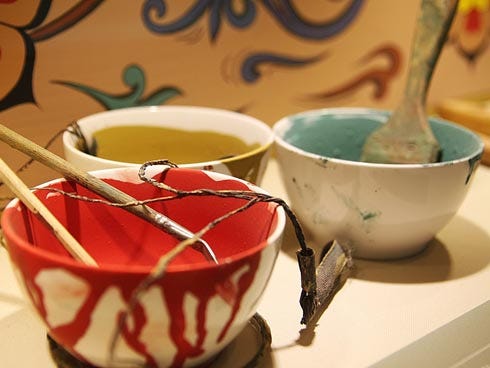
September's fourth Friday is set aside to honor and celebrate Native Americans.
So on Sept. 25, let’s reflect on how Northwest Florida tribes used plants native to the area. This science is referred to as ethnobotany.
Generally, we can group plants' ethnobotanical uses into six applications: food, fiber, medicinal, construction materials, transportation and miscellaneous uses.
INDIGENOUS PLANTS' INFLUENCE
Let's focus on the first three applications, so you can grasp native plants' influence.
Food: Many plants were food sources for Native Americans and early settlers in Florida.
Food plants included fruits, nuts, roots, grains and greens that varied by habitat, region and time of year.
Two examples of important food plants are fruits from saw palmetto, and starch from coontie roots. The heart of the cabbage palm — commonly called swamp cabbage — is still eaten in many rural areas.
Fiber: Various plants' fiber was used for many purposes. For instance, cordage (rope) makes baskets, clothing and other everyday materials. Muscadine grapes' long stems were used to make deer snares. Palms provided fiber and construction material for shelters. Other fiber sources included wire grass and switch grass.
Dyes — which played important roles in Native American life, just as they do today — were used in coloring textiles, in craftwork (for pottery and basketry) and in ceremonies (for face painting and objects). Tickseed, Goldenrod and Wax Myrtle are used to create yellow hues. Elderberry and Pokeweed produce rosy red colors.
Medicinal purposes: Perhaps one of ethnobotany's most intriguing aspects is the use of native plants for medicinal purposes.
Red Maple was used for liver and skin disorders. Witch-hazel could be used to treat hemorrhoids and insect bites, as well as for teething infants. Black-eyed Susan could be used to treat a cold, soothe earaches or ease pain and swelling from snakebites.
But don't attempt to replicate traditional herbal remedies. Many traditional herbal medicines are complex mixtures of different plant parts that must be gathered and prepared at different times of the year, mixed in specific proportions, and administered in scheduled doses of particular size and dilution.
LOST INFORMATION
In the southeastern United States, including Florida, evidence indicates indigenous tribes traded or exchanged goods throughout eastern North America.
During the Mississippian Culture Period (1000 to 1700 A.D.), transfer of goods continued, and these uses began to be better documented. This provided information currently available about plants and their uses.
Spanish explorers, missionaries and settlers also brought new plants and information to Florida.
However, Native American peoples who lived in Florida during European settlement were destroyed by introduced diseases, forced labor, physical conflicts and other factors.
As a result, information on native plant species, and how they were used, was lost or destroyed.
Sheila Dunning is a commercial horticulture agent at the University of Florida's Institute of Food and Agricultural Sciences Extension office in Crestview.
As much as half of popular pharmaceuticals today reportedly have ethnobotanical origins. For instance, aspirin comes from willow trees' bark.
However, in the United States, herbal remedies are classified as nutritional supplements, rather than drugs, because most companies supplying herbal remedies cannot or will not pay for extensive clinical testing that the U.S. Food and Drug Administration requires.
DID YOU KNOW?
This article originally appeared on Crestview News Bulletin: DUNNING: Tracking Florida's early native plant uses
